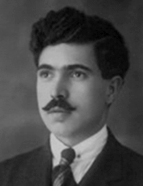

In his manuscript, Subsídios para o estudo da fala popular algarvia (1936), he states that the study of dialect in Portugal had started off badly and was very backward. The classification of dialects devised by Leite de Vasconcelos had served as a point of reference, since the publication of his Esquisse d’une dialectologie portugaise, in 1901, and was based on the existence of a certain number of different phenomena, phonetic, morphological and lexical. Estanco Louro argued that this principle of classification was the same as that of Jeronymo Contador de Argote, and went back to 1725 and his Regras da língua portuguesa. He posed the question: “I ask now, if Argote, and Dr Leite de Vasconcelos himself had known, when they wrote their books, what is now published in books, journals, newspapers etc. about the speech of the Algarve, for example, would they have adopted the same classification?” (fl. 1).
However, Estanco Louro did not aim to establish a new classification of dialects, but to contribute, by way of his findings and reflections, to a more objective knowledge of dialect, and for a future organization of a linguistic atlas. He defended his thesis basing himself of the Atlas Gilliéron, and by defending the presupposition that the phenomenon of speech cannot be limited to the correspondence between words and their roots, with exceptions apparent by analogy. One had to take into account “the broad influence in linguistic matters exercised by the spirit and the environment, or social life”, without though falling “into dilettantism, descending at times into ingenuous and primitive oddities, as to some extent has happened in philology, onomatology, ethnography, etc.” (fl. 3). Imbued by his positivist training, Estanco Louro longed, by the correct application of linguistic geography, “to achieve the domination of linguistic phenomenon by determining all the laws which govern them […] by following the scientific process of induction. […] Without the most intimate and most perfect possible knowledge of our popular speech, in the fields of phonetics, syntax, semantics, lexis, etc., any dialectical classification of dialects, with their sub-dialects and variations, is vain, arbitrary and therefore hypothetical or provisional” (idem).
